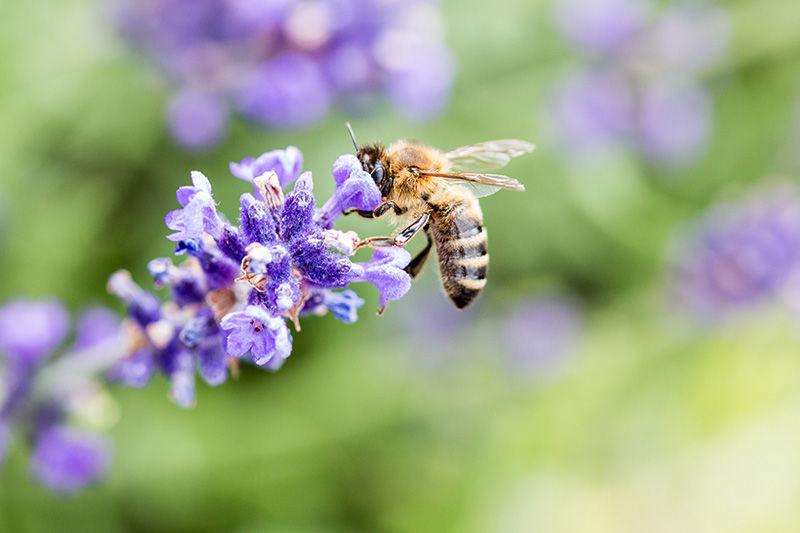When is the best time to start beekeeping?
Starting your first hive.
You’ve done the reading, visited experienced beekeepers, joined your local bee club and even bought hive equipment and a bee suit. You’re almost ready to start your first hive.
But even if you have all the gear at hand, there are other factors to consider before you launch into beekeeping. For one thing, timing is important – you can’t start a hive at just any point in the year and expect it to survive. Get the timing right, and your bees can settle into the hive and establish themselves. Get it wrong, and your hive could fail – a disappointing and expensive way to start your beekeeping journey.
There’s also the question of where to get bees. You need a substantial group of healthy bees – including a queen – to start a hive successfully. There are a few ways to buy bees, depending on your budget, your preferences and what’s available in your area.
Here’s how to get started:
Success by the season
Bees have set patterns of behaviour based on the seasons. Spring and summer are for nectar collection, building honey stores and increasing the population, autumn is about winding down and topping up food supplies, and winter means staying inside the hive, surviving on stored honey and shutting down egg-laying.
Knowing this, it makes sense that spring is the best time to start beekeeping. Setting up your hive early in spring gives your bees plenty of time to establish themselves and lay in stores for the winter. Months of blooming flowers and warm days will give them the resources they need to build strength before colder weather sets in. Without enough stored honey, the colony could struggle to survive.
Where to buy bees
Once you’ve built your hive in late winter or early spring, it’s time to fill it. To start on a strong footing, a colony needs a healthy group of bees, including a queen. If they come with stored honey and brood at various stages of development, all the better.
There are a few ways to acquire bees – it all depends on how much time you have, your budget and the options available in your area.
Packaged bees
Packaged bees are a simple option – but they have downsides. Packages are made up of worker bees taken from a few different hives and a mated queen in a cage. They are usually set up in a wooden box with a supply of sugar syrup, and may be couriered to you or picked up from the supplier.
When you receive your packaged bees, you simply shake them onto your foundation frames, place the caged queen into the hive, and continue to feed with sugar syrup for at least a couple of weeks to get them started.
Because packaged bees are individuals from different colonies and they are sent without stored honey frames, it can take a while for them to settle and start laying down comb. Some beekeepers think that packaging and transporting bees places them under unnecessary stress, and so avoid buying packaged bees for ethical reasons. On the other hand, because the bees travel without honey or comb the risk of disease transmission is low.
Nucleus hives
Nucleus hives – sometimes called nucs – are small but well-established colonies, ready to be dropped into your hive. You usually receive a cardboard or plastic box containing four or five frames of worker bees along with some stored honey, pollen, a young queen and brood in various stages of development.
Because they come with established honey and brood, nucleus hives can settle into their new home more quickly than packaged bees.
Most bee diseases and parasites attack the brood or honey first, so the risk of disease is higher with nucs. Make sure to check yours for signs of disease or infestation before you accept it from the supplier.
Swarms
If you’re prepared to put in the work, swarm collection is a good – and free – way to get bees. Catching a swarm is fairly simple as long as it’s in an accessible location, and swarms are primed to start a new hive so they usually get settled fairly quickly.
If you’re keen to collect a swarm, you can either register with a swarm-collection website like SwarmPatrol, or talk to your local council. People are usually keen to get a swarm off their property, so they’re happy for you to come in and remove it.
Once you have captured a swarm, simply shake the bees into your hive and give them some time to get settled. Check a few days later to make sure the queen is in the hive, and monitor as usual. Although a swarm could technically come with parasites or disease, bees don’t tend to swarm unless their original hive is healthy so the risk is relatively low.
Working hives
If keepers have more hives than they can care for effectively, they may sell them or give them away. When you buy an established hive, you get plenty of worker bees, honey and brood frames, and the hive itself – which is a money-saver if you’re on a tight budget. Check with your local bee club, keep an eye on beekeeping Facebook pages or browse sale sites like Gumtree and you might be in luck.
However, buying a full hive can be risky – especially if you’re new to beekeeping. Hives are usually sold by individual beekeepers, not bee suppliers, so there’s no guarantee that bees will be healthy or the hive will be in good nick. When you pick it up, check the body of the hive and look for signs of infestation. If you can, take another beekeeper with you for a second opinion.
You’ll also need to factor in travel and transportation costs – transporting a full hive isn’t a simple task, so don’t commit unless you have a suitable vehicle lined up.
Spring into beekeeping
Spring is here, so if you’re keen to start beekeeping, get started ASAP. Do your research, set up your hive, get yourself some bees – and you’re ready to go. Good luck!
Ready to start your first hive? Get set up with Ecrotek’s range of high-quality beekeeping gear.

